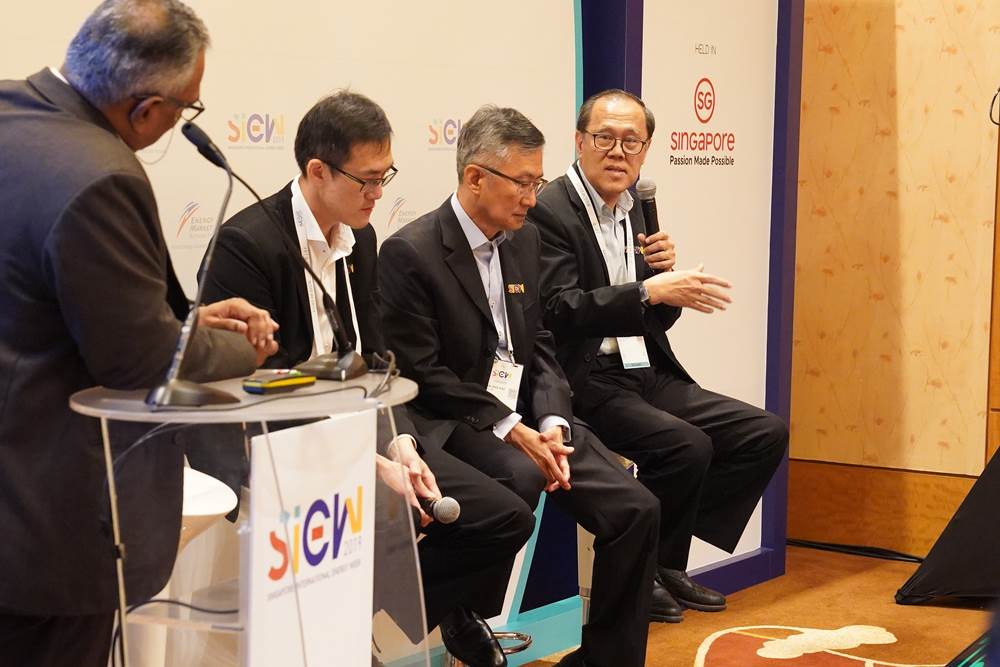
Grid 2.0: Enabling the Grid of Tomorrow
The power grid of today and tomorrow is fast becoming a “thinking” grid that will be able to adjust and regulate its performance, incorporate varied power infrastructure and enable multiple business models. This new grid will have to balance these capabilities with the need for security and the impact of disruption. The Roundtable G session delved into trends and challenges of the energy sector, and how they will transform today’s energy grid into “Grid 2.0.”
What can we expect from a Grid 2.0?
Mr. Siah Keng Boon, Vice-President, R&D and Innovation at Sembcorp Industries Ptd Ltd., shared the use of Virtual Power Plant (VPP) as an example of an up and coming business model in an increasingly decentralised and decarbonised energy sector. He shared that decarbonisation of the sector should not be something to run away from. Instead, Sembcorp Industries chooses to adapt and transform. Likening VPP to services like Airbnb and Grab, Mr Siah explained that VPP enables retailers like Sembcorp Industries use idling assets to provide grid services.
The roundtable participants added that the distribution grid, where distributed energy resources like solar PV, batteries and consumers are connected, would see the most change in a Grid 2.0. Mr. Chan Eng Kiat, Senior Principal, Intelligent Grid Operations, Accenture Smart Grid Services, APAC, provided insights about observed trends in the energy sector and their corresponding challenges in grid operation. Mr Chan explained that the distribution grid will see the most changes. Many existing practices such as network redundancy planning may be challenged such to adapt the network to this new environment.
Another key disruptor in distribution grid operation will be the use of blockchain for energy trading. By forming a microgrid within the power system, blockchain is a commercial platform which enables peer-to-peer energy trading. However, Associate Professor Gooi Hoay Beng from Nanyang Technological University cautioned that blockchain is ultimately a commercial platform. Power engineers will still be required for the technical operation of the microgrid.
The future of a Grid 2.0 as a digital grid
Digitalisation, increasing capacity of solar PV generation, Mass Rapid Transit (MRT) traction and electric vehicle charging all affect the grid differently from other loads because of one common element; they operate on direct current. This is in contrast to the existing grid, which operates on alternating current. The roundtable explored the scenario of a DC digital grid, opening up the potential of eventual solid-state transformer deployment in Singapore.
Serving as the heart of this highly efficient digital substation would be solid-state transformers, which Professor Sanjib Kumar Panda from National University of Singapore and Dr. Vaisambhayana Brihadeeswara Sriram from Energy Research Institute at NTU (ERI@N) presented. Enabled by advanced power electronics, solid-state transformers provide seamless bi-directional power control and eliminate harmonics introduced into the grid by DC loads and generation.
With thousands of new devices connecting to the grid, Dr. Tseng King Jet, Professor and Program Director of Electrical and Electronic Engineering, Singapore Institute of Technology, highlighted the challenges faced in power asset management and condition monitoring. He said, “New assets have less understood ageing and failure behaviour. There is a need to revisit current condition monitoring and asset management methods.”
Will a digital grid be a more hackable grid?
According to Mr Chan, by 2025, there will be 100 billion connected devices for every person. In this digital grid, cybersecurity will be of the utmost importance. Prof Zhou Jianying Professor of Cyber Security at the Singapore University of Technology and Design (SUTD) shared a number of innovative cybersecurity solutions developed by SUTD’s in-house iTrust testbed, tested through simulated attacks of their generation applications in the iTrust testbed.
During the dialogue session, moderator Dr. Sanjay Kuttan, Executive Director of Singapore Marine Institute, asked if a digital grid would be a more hackable grid, to which Dr. Tseng responded yes. He explained that currently, not much attention has been placed on cybersecurity measures for small devices connected to the grid. However, in a true grid 2.0 with thousands upon thousands of connected devices, there is a real need for the academics and industry to work together to ensure the continued security of the grid.
As the grid evolves to adapt to the changing environment, there will be increased vulnerabilities and disruptors. However, there will also be tremendous opportunities as well. This will prove to be exciting times for this seasoned industry.